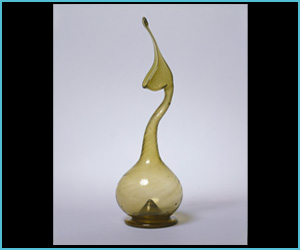|
Chemical Industries
In this particular area, the works
of Jabir and Al-Razi
,
their experimental work above all, set the foundations to many
industrial applications we have today. Here, there is no need to
go into the pharmaceutical aspect of the matter as this has been
considered elsewhere (more can also be found in the works of
Levey and Meyerhof
.)[1]
Jabir (late 8th-early
9th) describes the preparation of sulphide of
mercury, oxides, arsenics, and many other substances, besides
making applications with industrial implications, including the
refining of metals, dyeing of clothes, the use of manganese in
glass making, use of pyrites etc.[2]
Al-Razi
’s
(d.923-924) Secret of Secrets describes processes
which can be identified in their modern equivalent of
distillation
,
calcination, crystallization etc. In al Al-Razi's Secret of
Secrets[3]
are methods for the smelting of metals, the sublimation of
mercury, the preparation of caustic sauda, the use of Mercury
Ammonium Chloride solution as a dissolving reagent, and the
preparation of Glycerine from Olive Oil. From al Razi and
Jabir’s corpus was derived the study of the corrosive properties
of salts and the introduction of two new materials, sal ammoniac
(ammonium chloride) and salpeter (potassium nitrate), ultimately
to lead to the discovery of the mineral acids.[4]
These acids were valuable agents for industrial applications.[5]
Nitric acid became familiar in the West from the 14th
century; and was used for the separation of silver and baser
metals, which it dissolved, from gold.[6]The
separation could also be effected by aqua regia, a mixture of
nitric and hydrochloric acid obtained by adding sal ammoniac to
nitric acid, which dissolves gold.[7]
The impact of such developments on modern industry can be
gleaned in Multhauf origins of chemistry.[8]
Singer also delivers a good study on the early association of
chemistry and industry.[9]
The Muslims legacy can
be also found grouped in medieval written collections, one of
them being Liber Sacerdotum, which contains over 200
recipes, some of them, certainly dating from pre-Islamic times,
but the substance of the work comes from the translated Islamic
lore. It includes recipes for gilding or silvering, such as how
to give a golden texture to glass.[10]Hill
also notes that works by
many Muslim chemists included recipes for products that had both
industrial and military uses.[11]
Hassan al-Rammah a Syrian (d. 1294) wrote a treatises on the art
of war in general, which also includes pyrotechnic recipes,
notably methods of preparing and purifying saltpeter.[12]
The origins of the
petrol industry go back to the Islamic times.[13]The
Muslims extracted crude petroleum (naft) and distilled it for
both military and domestic uses. There exists many descriptions
of the distillation
process in al-Razi's
Book of Secrets. From his experiments he obtained distillates
(called white naft,) which he used to `soften or loosen' some
solid substances, such as certain gems and minerals. Al-Razi
also used oil lamps
(naffata) to heat chemicals gently in his chemical and medical
works. Besides crude and distillates, the Muslims also produced
asphaltes, particularly in Iraq, where Qir (pitch) and Zift
(asphalt), were produced and exported.
The
medieval Western Christian treatise of Mappae Claviculae,
most certainly incorporated some later contributions by Adelard
of Bath
,
which include interpolated information on methods of naval
warfare used by the `Saracens,’ and other military instructions,
and descriptions of Muslim methods of building with oil and
pitch.[14]
It
is needless here to go into all the uses and applications of
oil, whether for domestic or industrial purposes that can be
found in our day.
The scale of the
Islamic impact on the West is visible in the very chemical
vocabulary, Singer pointing out how the early medieval Latin
language had no adequate
technical vocabulary.[15]The
translators therefore merely transliterated words from their
Arabic or Hebrew form, thus Latin technical words full of
Semitic expressions: antimony, cinnabar, marcassite, realgar
(red sulphide of mercury), tutya or tutty (zinc oxide) and
zircon.[16]
New substances such as sal ammoniacum (ammonium
chloride,) and other words: bismuth, borax, calamine, natron,
talc, and tartar; the names of many dyes: alizarin, alkanet,
aniline, carthamine, carmine, crimson, fustic, henna, kermas,
lac (modern lake), saffron, and sandal wood.[17]
[1]
M. Levey: Early
Arabic Pharmacology; E. J. Brill; Leiden, 1973.
M. Meyerhof
: `Esquisse d'histoire de la pharmacologie et de la
botanique chez les Musulmans d'Espagne,' al-Andalus
3, 1935, pp. 1-41.
[2]
G. Anawati: Science, in The Cambridge History of Islam,
op cit, pp 741-79, at p. 776.
[3]
See E.J. Holmyard:
Makers of Chemistry
; Oxford at the Clarendon Press, 1931.
[4]
R. P. Multhauf: The
Science of Matter. Edited by D. C. Lindberg: Science in
the Middle Ages; op cit; pp. 369-390: p.376
[5]
D.R. Hill
: Islamic Science;
op cit; p. 88.
[6]
C. Singer: Short
History of Scientific Ideas to 1900, op cit; p. 184
[7]
Ibid.
[8]
R.P. Multhauf:
The Origins of Chemistry; Gordon and Breach Science
Publishers; London, 1993.
[9]C.
Singer: The Earliest Chemical Industry
; The Folio Society; London; 1958.
[10]
Ibid. p. 66.
[11]
D.R. Hill
: Islamic Science, op cit, p. 85.
[12]
G Sarton
: Introduction, op cit; Vol II, p. 767.
[13]
D.R. Hill
: Islamic Science, op cit, pp 87-8.
[14]
L. Cochrane: Adelard of Bath
; op cit; p. 37.
[15]
C. Singer: The Earliest Chemical Industry
; op cit; p. 52.
[16]
Ibid.
[17]
Ibid. |
